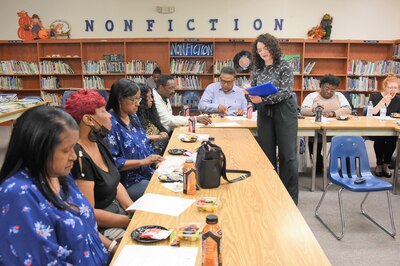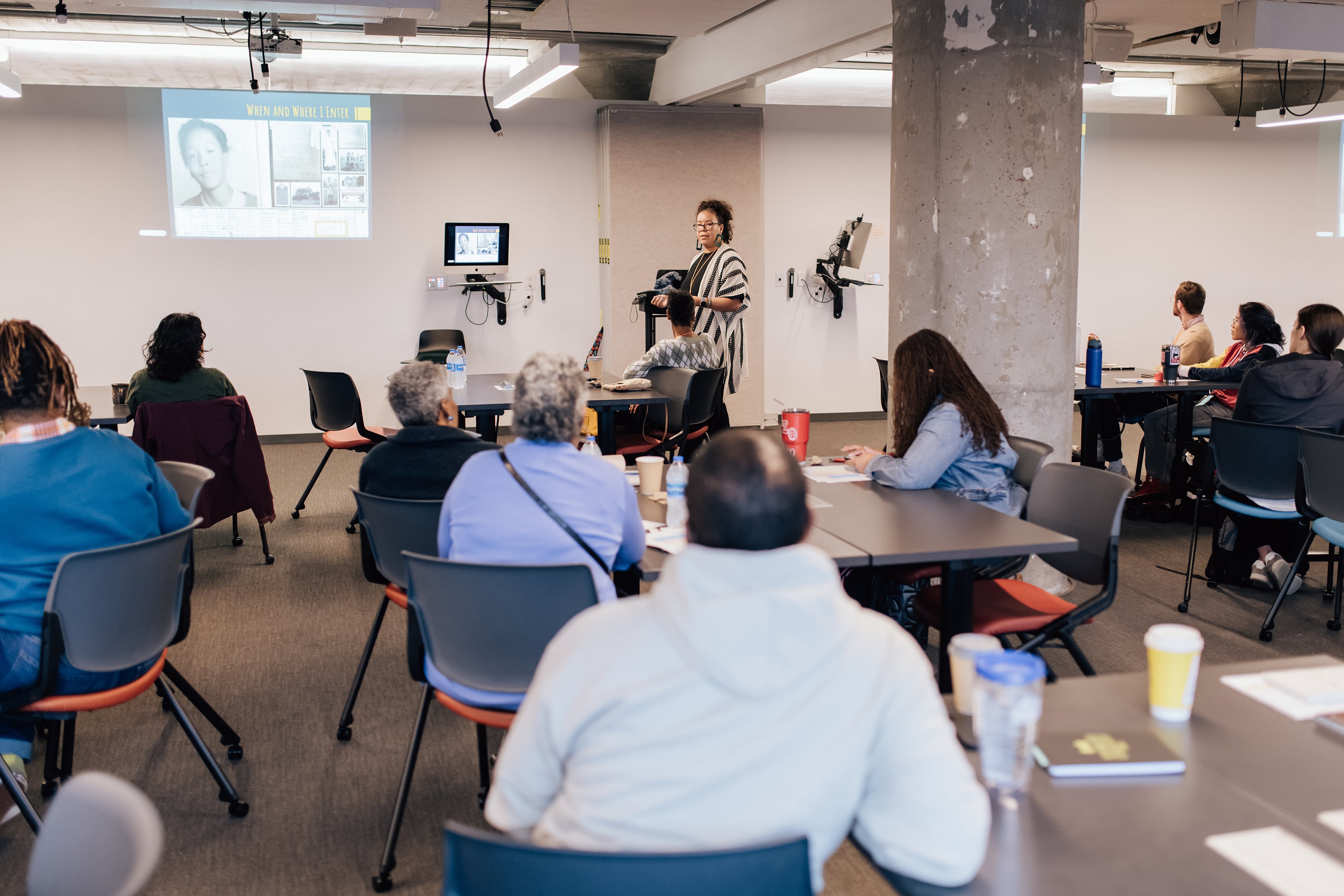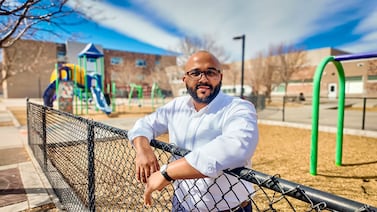Sign up for Chalkbeat Tennessee’s free daily newsletter to keep up with Memphis-Shelby County Schools and statewide education policy.
When elementary schoolers learn about Dwania Kyles, they’re struck by her bravery. When Kyles was in first grade, she and 12 others became the first Black students to walk into all-white classrooms in Memphis to begin desegregating the city’s school system.
Another thing the elementary students marvel at about those pioneers, Kyles says: “They’re still alive!”
The milestones of the Civil Rights Movement may seem like part of a long-ago history — it was 70 years ago this month that the Supreme Court ruled in Brown v. Board of Education against forced segregation. But it took years of battles before the so-called Memphis 13 made it into the all-white schools, with all-Black schools persisting long after the ruling. And the battles didn’t end there.
Kyles, for her part, has been working to make sure that complete history is better understood, spearheading a new curriculum to teach the city’s story of school desegregation.
Taught in public elementary school classrooms in Memphis — including the very ones the Memphis 13 desegregated — the curriculum’s lessons localize themes of the Civil Rights Movement by encouraging students to make a difference in their own communities and learn from their elders.
The goal is for students and teachers to develop a richer understanding of Memphis’ pivotal role in American history, at a time when most Memphis schools have become segregated again, and state laws can make teachers feel uncomfortable helping students investigate racial issues.
Every state, every district, every school, every classroom has its own school desegregation story. And school desegregation impacted everyone differently.
— Gina Tillis, creator of 'Memphis 13' curriculum
Curriculum architects Gina Tillis and Anna Falkner developed the community-focused lessons alongside surviving members of the Memphis 13 and other educators, with initial support of a grant from the Library of Congress. The curriculum is a product of the newly created Memphis 13 Foundation, which supports the first graders’ legacies in other ways — including in towering murals of the students at the schools they desegregated.
Another important aspect of the curriculum: Children get to learn about other important children, not just important adults, Tillis said.
“How often do children see themselves?” Tillis asked. “... And children in your neighborhood, that went to your schools, that had a profound impact on society? Isn’t that powerful?”
Curriculum connects students to neighborhood, family stories of desegregation
Tillis said the professional development courses she leads on the curriculum leave teachers invigorated and eager to take the lessons back to their students and make them their own. One teacher who helped develop the curriculum wrote a play for her students to perform. Another who attended the training created a bulletin board that mixed historical photos and newspaper clippings with student responses.
The second grade curriculum includes a picture book project. For fifth graders, students conduct oral-history interviews. As part of the lesson, students learn to develop interview questions, conduct their interviews, and then evaluate what they learned as a class.

Students have returned to their Memphis-Shelby County Schools classrooms with stories from their own elders about school desegregation in Memphis and other American cities, as well as international ones, Tillis and Kyles said.
“If you are not connected to the Memphis 13, then you probably are connected to another elder that desegregated a school,” Tillis said. “Because every state, every district, every school, every classroom has its own school desegregation story. And school desegregation impacted everyone differently.”
Tillis has plans to eventually expand the curriculum to include older students.
For Kyles, it is important that students learn how to listen well, and with compassion. What if, she wonders, there had been town halls and public-service ads after the Brown v. Board decision, to help society navigate the change?
“We can change all the laws. We can come up with all the policies in the world that we want to,” Kyles said. “We’ve now got to really focus on: How do we change people’s hearts and their belief systems?”
How Tennessee ‘prohibited concepts’ law affects discussions
The Memphis curriculum is aligned with Tennessee social studies standards and focuses on the role of primary sources, like newspaper articles, interviews, and other original documents.
The Memphis 13 Foundation has received funding from the state for its curriculum and other programming, which includes other community events.
But race is still a sensitive topic for many Tennessee teachers, now that lawmakers have placed restrictions on what they can say. Tillis includes a discussion of the 2021 “prohibited concepts” law — which Tennessee teachers are challenging in court — in training teachers to use the new curriculum.
The law restricts teachers from discussing 14 concepts that the Republican-controlled legislature deemed cynical or divisive, and the punishments can include stripping teachers of their licenses and cutting off funding to school districts.
In practice, the law has made teachers more conscious about how they approach the material, Tillis said. And concerns about compliance have led to more scrutiny of reading lists associated with the curriculum as it has been implemented at MSCS, she said.
MSCS declined to make its staff available for an interview in time for the publication of this story.
While the curriculum falls within the law, student questions could push the boundaries. For instance, one of the prohibited concepts is inherent privilege based on race. Elementary school students who are just beginning to understand history may ask: “Why couldn’t they all go to school together?”
“We don’t have to say we’re talking about privilege,” Tillis said, “but it’s going to come up.”
Tillis has encouraged teachers to explain the law itself when prohibited concepts come up in classrooms. The students are “so smart. They know when something is not fair,” Tillis said. And they’re picking up on inequities in their own schools — even small, simple things — just like the Memphis 13 did when they began desegregating Memphis schools nearly 70 years ago.
It reminded Kyles of Memphis 13 student Alvin Freeman, who desegregated the white Gordon Elementary in North Memphis.
“Ice cream at Gordon wasn’t different from ice cream at Klondike,” the neighborhood’s Black school, an adult Freeman said in “The Memphis 13,” a documentary film that’s part of the curriculum. “Klondike didn’t have ice cream.”
Laura Testino covers Memphis-Shelby County Schools for Chalkbeat Tennessee. Reach Laura at LTestino@chalkbeat.org.







